Ardha-Nari
(A bunch of thoughts – Posted in response to a Note from Shri D Sampath)
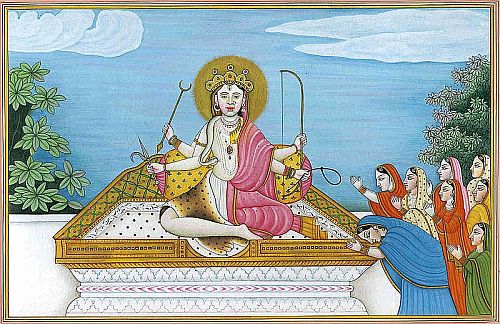
In both the Shakta and Shaiva traditions of Tantra school, the Ultimate Reality is conceived as the Unity of Shakti and Shiva They are regarded as one.
Ardhanarishvara “the Lord Whose Half Is Woman” represents a transgendered being created by the union of Shiva (male) and Shakti (female). The Ardhanari form illustrates how the female principle of God- Shakti is inseparable from the male principle of God – Shiva. The Ardhanarishvara, above all, represents the totality that lies beyond duality.
Siva in the compound form of Ardha-nari is a hermaphrodite from whose womb the phenomenal existence proceeds.
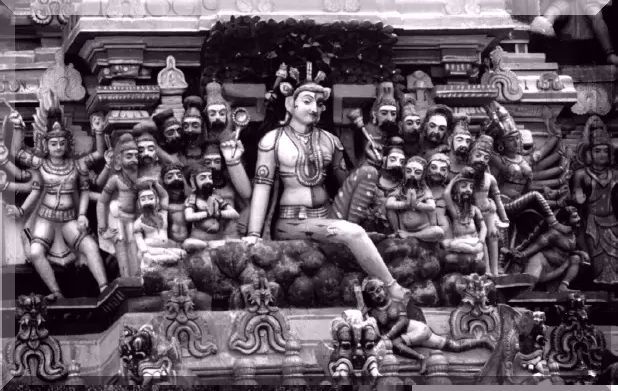
Shiva Ardha-nari is described, as being the Soul of the World, and as partaking of the nature of both sexes. From him, all existence is derived. The creation is evolving itself. Death is nothing more than a change of body and a passing from state of visibility into invisibility. Every moment, some part of the world passes into this Invisibility. It does not utterly perish, but only disappears from our sight, or being translated into some other form.
There is also a tradition , which visualizes the whole of this existence as the unity of Lakshmi the Goddess and Vishnu. The Devi is the Mother principle that brings forth and sustains this Universe.
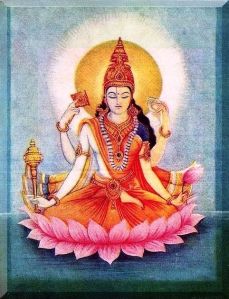
According to Shaktha tradition, Devi is identified as the source of all manifestation, male and female … it is her body that splits in half. In other words, she is the androgynous divine. Shakthas therefore customarily refer to the hermaphrodite from as Ardhanarishwari using the feminine ending i to suggest saying she is “a goddess who is half woman”.
 (Devi as Ardha-purusha)
(Devi as Ardha-purusha)
The significance of this view is rather interesting. Shakta creation theories place the Goddess at the center of the scheme of things. They argue that since the nature of the Cosmos is reflected in the human body; and since it is the Female who gestates and gives birth to new life, it is appropriate to recognize the hermaphrodite from as being principally feminine.
In the Shakta view, the Ardhanarishwari illustrates Devi, the Goddess, as producing her consort Shiva out of herself, balancing perfectly her feminine and masculine aspects.




[ I reckon, the arguments about the male or female orientations of Ardha-nari are rather pointless, beyond a certain level of analysis . After all, the Supreme Divine is neither female nor male; rather, it encompasses and transcends all gender distinctions.]
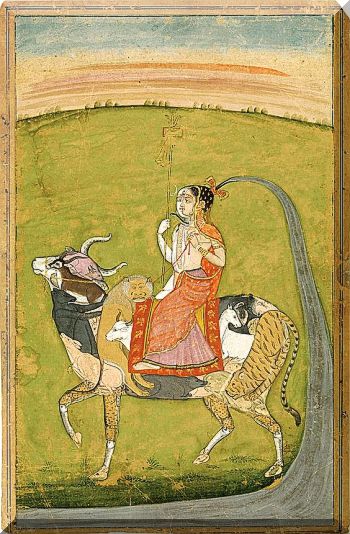
Ardha-nari in iconography is depicted as half-male and half-female. Ardhanarishvara is typically shown with the left half of his body being female and the right half, male. The female (Shakti, or Parvati, or Uma) half is usually garbed in red and often holds a lotus, while the male half (Shiva) wears a tiger skin or an ascetic’s cloth around the waist. The skin of the female half is tan, while that of the male half is light blue. His/her gaze is pensive, serene; his/her pose sensuous, inviting.
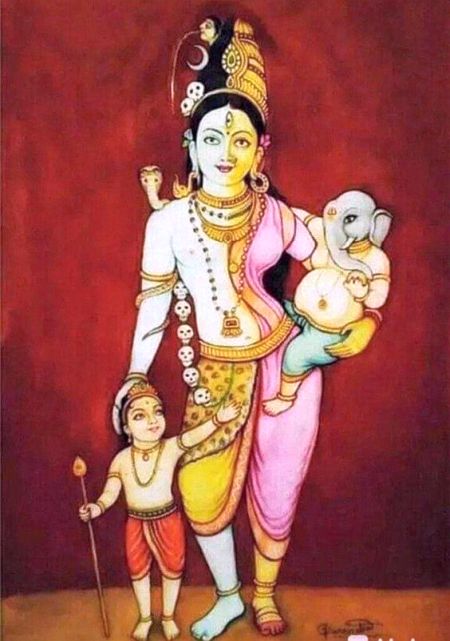
The cult of Ardhanarishvara appears to have reached a pinnacle during the tenth through the twelfth centuries and again in the eighteenth and early nineteenth centuries, when he-she became a popular subject in sculpture and painting. The best sculptural depictions of Shiva as Ardhanari are to be seen in the sensuous Chola dynasty bronzes and the sculptures at Ellora and Elephanta.

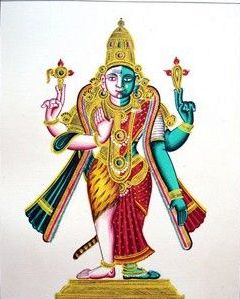
“It was as though two objects were simultaneously perceived in close proximity. In one half it was as white as camphor and in the other half it is as red as red lead. The body of a single unit was highly wonderful. In one-half there was flowing tresses. In the middle of the necklace there was a flower. The body of the crescent moon-crested Lord had silk in one-half that was beautiful with a single anklet, ear-ring and bracelet. The body of the companion of Kubera shone with a single breast“.
[Skanda Purana]
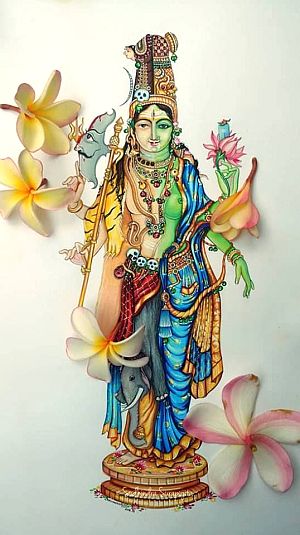
Her body is fair like the champak flower;
His body is like camphor.
She has elaborately braided hair decked with pearls;
And he has matted hair.
From Her you hear the movement of tinkling anklets and bracelets,
His lotus feet have glistening anklets of snakes.
She is adorned with golden armlets,
And He has armlets of snakes
Hers is the dance that creates differentiation;
His is the dance that destroys everything.
I bow to the Mother of the Universe.
I bow to the Father of the Universe.
[“Ardhanarinateshwara Stotra,” or
“Hymn to the Lord of the Dance Who Is Half Woman”]
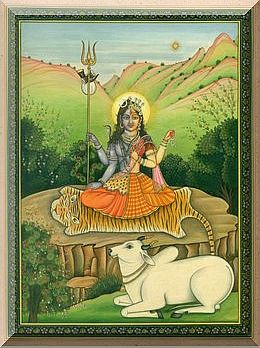
Ms. Ellen Goldberg observes: the true Shakti-Shiva balance of Ardha-nari enables the devotees to overcome the purely human biases and prejudices. As she explains “The image of Ardhanarishwara does not merely present a synthesis of masculine and feminine gender traits, but rather attempts to portray a fundamental belief in the possibility of personal transcendence, usually understood as the attainment of non dual consciousness. …
[However, it can only capture this ideal if and when the ego of gender — which at times distorts and privileges the male half of the image — has been recognized and [overcome].”
The Tantra ideology believes that no one is just male ; and, no one is just female; everyone is bi-sexual. The elements of both sexes are there in each of us. The Ardha-narishvara , in a way, represents this concept. Now , modern psychology, depth psychology particularly, also says that man is both man and woman

***
http://shaktisadhana.50megs.com/Newhomepage/shakti/shivanshakti2.html
Please see Ardhanareeshwara Stuthi which describes Shiva as Ardha nari
http://www.stutimandal.com/gif_misc/ardhanari_nateshvar_stuti.htm
Please also check the Shaktha version of Ardhanareeshwari Stotra a beautiful poetry which sings the glory and the sublime beauty of the Mother as Ardha nari.
http://shaktisadhana.50megs.com/Newhomepage/stotras/ardhanari.html
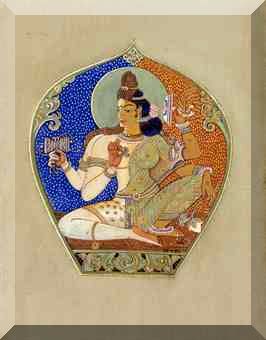
Rig Veda also speaks about the One appearing as many; and the single egg splitting into Bhuta and Prana. ‘He, who is described as male, is as much the female and the penetrating eye does not fail to see it’. The male is only so much male as much he is female; and the female is only as much female as much she is male. The maleness and femaleness are the attributes contained in one frame.
In the hymn ‘Ekohum bahusyami’ (Shiva Purana), Shiva says, I am One, but wishes to be many.
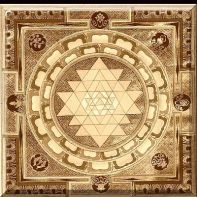
The imagery of the all enveloping space issuing out of a dimension-less Bindu often occurs in Tantric texts. The Bindu at the center of the Sri Chakrais the symbolic representation of the complete harmony (samarasya) of Shiva (consciousness) and Shakti (energy). It signifies a state of non-duality where all tendencies and distinctions have vanished. By worshiping the Devi in Sri Chakra one is actually worshiping the highest ultimate force in the Tantric ideology, Sri Ardhanari, where all aspects are non-existent.
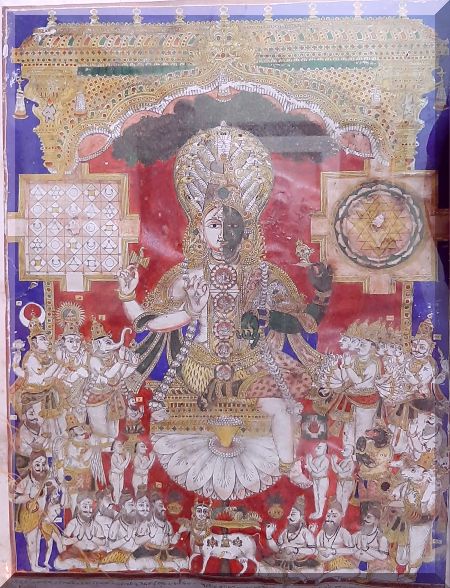
The followers of Sri Vidya who worship the Sri Cakra too envision the deity as Mother Goddess.
It is explained the Sri Chakra is itself androgynous by its very nature . Bindu is Kameshwara, the ground of the universe; the Trikona is Kameshwari the mother of the universe. The union of the two is Sri Chakra, which in its androgynous form symbolizes the underlying unitary principle in all existence.
The Samayin school of Sri Vidya regards Shiva and Shakthi as one; Shiva becomes Kameshwara and Kameshwari becomes Shiva. The identity of Shiva and Shakthi is the foundation of phenomenal manifestation in order to create (srusti), preserve (sthithi) and withdraw (samhara).

This school regards Shiva as Dakshina_ murthi. The expression Dakshina means a woman, a female principle which is competent to create, unfold and manifest. And, when Dakshina assumes a form as Dakshina_murthi, it is Ardha-nari.
Kashmiri Shaivism too argues that the Absolute is not merely self-luminous but is also self-consciousness and dynamic. The two aspects of self-luminosity (svaprakasha) and self-consciousness (vimarsha) are the representations of Shiva and Shakthi.
And, their non-duality is figuratively expressed through the concept and the form of Ardha–nari, the two conjoined- the one as two and inseparable. This school believes that the Absolute manifests itself as multiplicity while never shedding its fundamental nature. The entire world of experience –diversity and unity, subjective or objective- is the manifestation of the Absolute.
The relationship between the world of manifestation and multiplicity, with the Absolute is sought to be explained with the analogy of the gold and the ornaments made out of it.Shiva is the essence and when this force fuses with Shakthi it results in multitude of manifestations.
The relation between Shiva and Shakthi is also compared to the relation between the sun and its rays. The analogy represents the union of the core substance and energy it radiates; the Being and his Shakti. It embodies the principle of Ardhanaeeshwara.
Brahman is static Shakti; and Shakti is dynamic Brahman.
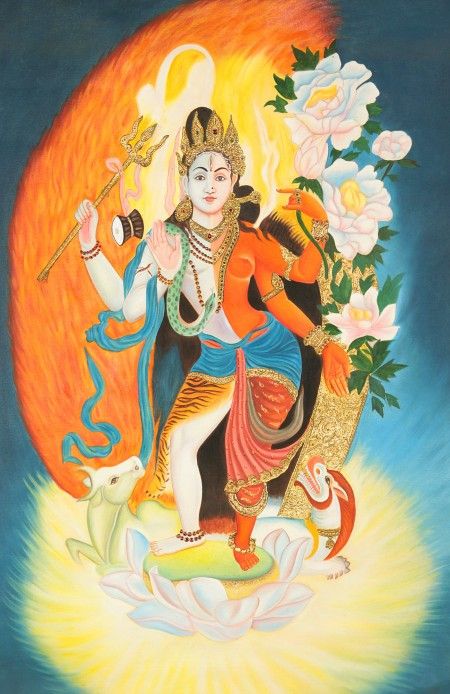
**
Ajna chakra is positioned at the eyebrow region and is said to represent the psychic channels Ida and Pingala which meet here with the central shushumna channel, before rising to the crown chakra, Sahasra. Ajna is considered the chakra of the mind. It is the seat of intuition, and the ability to see the underlying reasons behind everything. It is here that all energies of the body meet up and become one. The presiding over this chakra is, aptly, the Ardhanareeshwara also called Shukla –mahakala, a hermaphrodite form of Shiva-Shakthi symbolizing the primordial duality of Subject and Object and the culmination of all energies. The deity of this chakra is Haakinii, the one with six faces and six arms.

***
Rig Veda speaks about Dyava-Prihtvi Heaven and Earth as parents who sustain all creatures; they are also the parents of the gods. One is a prolific bull and the other a variegated cow, both being rich in seed. In this case, the Earth or Matter was the wife; and the Soul often identified with Heaven or the subtle ether was the husband. By their conjunction all things come in to existence. So inseparable is their union, as father and mother, that the two blend together, forming one great Hermaphroditic deity from whom sprang every varied part of the Universe.
[Dyaus is usually referred to as the father (Dyaus pita), while Prithvi the Earth is the Mother (Prithvi –mata).But, strangely, both are, at times, spoken of as two maidens or mothers (RV: 10.64.14).And, in about 20 passages, Dyaus is feminine and is called as a Devi (goddess) .Prof. MacDonnell remarks that Dyaus’s female counterpart (Prithvi) was so dominating and overpowering as even the gender of Dyaus of got subdued into a feminine status.]
In this material system, the Intelligent Being was sometimes regarded the animating Soul and sometimes the husband of the Universe (purusha), while the Universe (creation) on the other hand was sometimes reckoned the body and sometimes the wife of the Intelligent Being (prakriti). The husband and wife blended together into one hermaphrodite; whatever is said of the one is also said of the other. Shiva and Parvathi form that compound deity partaking of both sexes, the Ardha-Nari. The union of the two is as perfect as that of the soul and body in a person.
The Great Poet Kalidasa hails the two as inseparable like the word (vak) and its meaning (artha).
The expression Purusha etymologically signifies that which moves ahead (purati agre gachchhati) . It is derived from the root pf which carries shades of meanings as protecting, pervading, filling etc. Prakriti the feminine principle represents matter, nature and life . Prakriti evolves, changes and binds; but it needs the presence of Purusha to enliven, to create and to preserve life. The Universe is the manifestation of Purusha and Prakriti, entwined inseparably.

(Painting by Sheree Rehema who says “This is easily my favourite of any art piece I’ve done, and symbolizes creation, love, and divine unity amongst a host of other things for me. I hope the love shines through.”)
***
Similar ideas appear in other cultures and other religions. Please check this interesting site for details. It showcases comprehensively then on-binary and inter-sexed deities in Egyptian, Greek, Hindu,Kabbalah,Buddhist,Christian, Polynesian, Sumerian, African Aztec and Norse traditions :
http://www.whatisgender.net/phpBB3/viewtopic.php?t=187
“When you make the two one, and when you make the inner as the outer and the outer as the inner and the above as the below and when you make the male and female into a single one, so that the male will not be male and the female not be female …. Then you shall enter the Kingdom.”
– Jesus of Nazareth, in the Gnostic Gospel of Thomas, Logion 22
Zohar considered the most important work of kabbalah or Jewish mysticism too holds the belief that the Godhead is complex, rather than simple, and that divinity is dynamic and incorporates gender, having both male and female dimensions. The oneness of God is perceived in androgynous terms as the pairing of male and female; the former characterized as the capacity to overflow and the latter as the potential to receive.
George Stanley Faber in his The Origin of pagan idolatry (1812) makes an interesting observation in this regards:
We sometimes find in these texts the serpent was produced from the egg, and sometimes the egg from the serpent. They stand therefore connected mutually with each other in the relation of parent and child. It is perhaps that contradictory relationship which is feigned to subsist between the great father and the great mother. The one is said to be the husband of the other; and from their mystic embrace all things are generated: yet the great father is described as the parent of his consort; and the great mother is represented as the parent of her husband.
But the great father was Adam reappearing in Noah: and the great mother was the Earth melting into the character of that smaller world the Ark. These two being blended into one, whatever is said of the former is equally said of the latter: and, as the great god was also a goddess, and as the great goddess was also a god; each of them, by whatever name they may be distinguished, is alike pronounced to be one and all things.
Such is also the character of Janus, Jupiter, Pan, and every other chief god: they are declared to be each the same person. Such also is the character of Isis, Isi, Venus, and the other kindred goddesses: they are each declared to be one person, and properly they are the Earth and the Ark viewed conjointly; yet, from their hermaphroditic union with the great father, they are each like him declared to be the Universe.
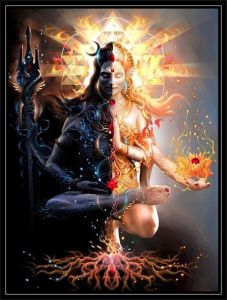
The Shakta texts declare that Devi is the Brahman (the Supreme Divine), and that Shiva and all other gods and goddesses are her aspects. Amazingly, the Ardhanarishwari produces her consort Shiva out of herself, perfectly balancing Her Feminine and Masculine aspects. She is atonce the mother and the consort.
The tantric text Pingalo-panishat (verse 21) describes the Devi. She is seated in the centre of the triangle (trikona chakra) the three sides of which are represented by the three gods Brahma (creator), Vishnu (preserver) and Rudra (destroyer). They are the expressions of the aspects of Shakthi. They are her creations. She is Chinmayi, pure consciousness. She is masculine, feminine and nature .She is the mother goddess, the mother- father of the entire universe. She is the hermaphroditic Devi in the form of Ardha-Nari.
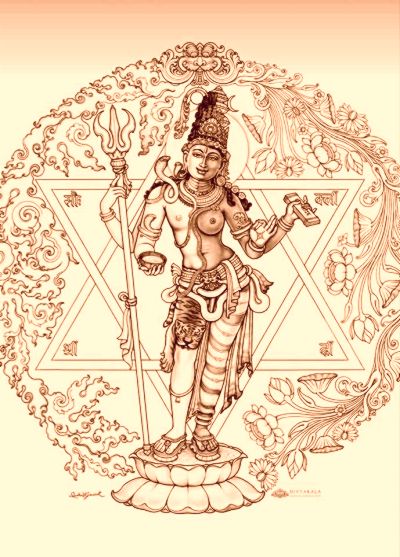
At the same time, the other texts describe that in the single character of Hiranyagarbha all the three offices of Brahma, Vishnu, and Siva, are united. He is at once the creator, the preserver, and the destroyer. He is the primeval hermaphrodite, or the great father and great mother blended together in one person. Consequently, he is the hermaphroditic Siva in the form of Ardha-Nari.
[http://www.amcbryan.btinternet.co.uk/origin-of-pagan-idolatry-vol-1.pdf ]
Certain traditions tend to depict Ganesha also in the Ardha-Nari form
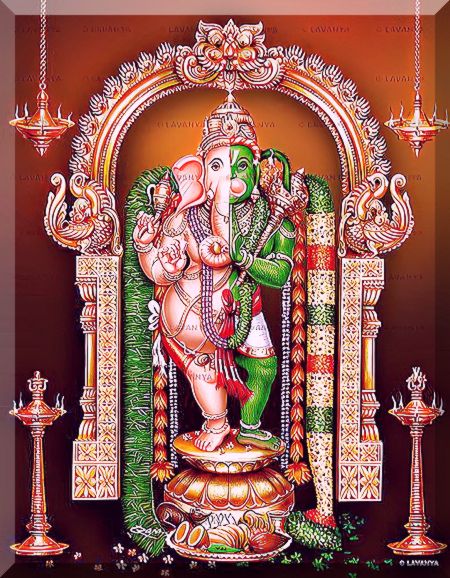
****
The Chinese, the Pythagorean, the Orphic, and the Platonic theology regard same great father and great mother united in the single mysterious person of the hermaphroditic Adonis, or Zeus, Phoenician, or Orphic theology.
According to Greek mythology Hermaphroditus the child of Hermes and Aphrodite fell so passionately in love with Salmacis, a nymph, that they beseeched Zeus , the king of gods, to unite them for all times. Zeus did accede to their request and joined them in a single body. Since then , it is believed , man and woman reside in each other.
The Pythagoreans were fond of expressing such notions by numbers. Similar to this is the Chinese opinion, that one produces two, that two produce three, and that three produce all things.
In Chinese Taoism this concept is symbolized by the coming together of YIN and YANG in the Tao. Like Ardhanarishvara the Greek god Hermes, is associated with communication; the intermediate being that often serves to mediate between women and men, mortals and deities, and between other entities.


Androgynous Azoth by Johann Georg Gichtel(1638 – 1710)
 According to some interpreters of Tarots, the central figure is androgyny; and the scarf conceals this fact. This figure represents Truth, just as Ardha –nari represents Truth and harmony in nature.
According to some interpreters of Tarots, the central figure is androgyny; and the scarf conceals this fact. This figure represents Truth, just as Ardha –nari represents Truth and harmony in nature.
Similarly, the Hermit is the Androgynous keeper of self knowledge. He too wears a veil.
***
Finally, The Supreme Reality is conceived as non-dual, having within it, a subtle duality of Shiva and Shakthi – the Power holder and Power- described as being (Sat) and will (Chit). What is called the Power becomes the Mother, Tripurasundari and the Power Holder, Shiva her Concert. Though they are one in principal, they appear distinct. Shiva and Devi both encompass each other’s aspects and each becomes the substratum of Ardhanareeswara.
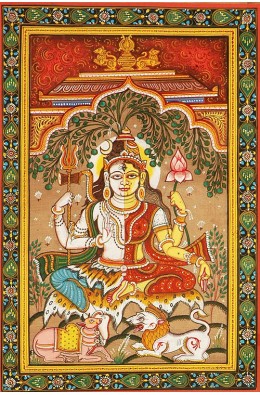

At another level, Ardhanareeswara´s iconographical embodiment of paradox and the meeting of dualities-embodied sonically as well as visually- and synthesis; embodied by individual men and women. The male hormone Testosterone in women and the female hormone Estrogens in men testify to the fact that characteristics of both sexes are present in each one of us. The production of these in our bodies keeps our personalities and our bodies in balance. The differences are brought together in the beautifully conceived anthropomorphic form of Ardhanareeswara.
The form encompasses everything from action to inaction, eternal rest to endless activity, the terrible and the benign. The Devi depicted on the left half of the deity, is the power of god by which creation, protection, and destruction of the universe is accomplished. The philosophy of the Ardhanareeswara places the genders on equal terms without question.
Ardhanareeshwara stands for a profound philosophic truth that the female and the male are complementary to each other and it is their combination, the blending of grace and power that contributes to the creation , preservation and propagation of life.

It is one of those things; as a concept Ardha-nari is highly fascinating; and one can talk endlessly about it eloquently and even sing in rapture. But as a reality, it is very hard to deal with; and more so live it. It is worse than living hell.
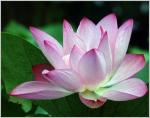
Resources:
Lalitha Sahasranama, Soundarya Lahari and Bhakararaya’s commentary on Bhavanopanishath.
Women, Androgynes, and Other Mythical Beasts by Wendy Doniger O’Flaherty
The Lord Who Is Half Woman: Ardhanarisvara in Indian and Feminist Perspective by Ellen Goldberg
ALL PICTURES ARE FROM INTERNET
KJT
November 10, 2014 at 10:59 pm
Absolutely wonderful post.Thank you so much for this. It is especially needed in today’s Western world when so many people are struggling with gender identities, when we and the Divine are ultimately beyond such illusions. Shall be sharing this in as many places as I can.
sreenivasaraos
November 13, 2014 at 1:51 pm
Dear KJT , Thank you for the visit and the appreciation.
Please do share.
Please do read the articles on various subjects listed under ‘Categories’
Regards
sreenivasaraos
March 20, 2015 at 5:24 pm
i find the concept very alluring.
the pictures, esp, the last one was very nice.
this is very long. i will read it when i can – peacefully. thanks for posting this.
Supriyad
sreenivasaraos
March 20, 2015 at 5:26 pm
sri rao,
it is a nice blog on ardhanareesvara/ardhanareesvari concept. the pictures are equally beautiful. i once asked a biology student, “why males have nipples on their breast when there is no function for them.” the student could not answer easily. i told that for quite some time the foetus is both male and female. it has both characteristics in rudimentary form to develop. after some weeks, the differentiation takes place. the following reference from internet by dr. marilyn explains this idea better.
mkv
Narayan MKV
quote:
“for the first 7 weeks the fetus is undifferentiated – and only an
examination of the chromosones cn indicate the sex. the imput of
androgenes triggers the basic orans to differentiate inot mlae organs.
fetus with only one x chromosome ( and no hormonal triggering develop
external femine sex organs leading john money to say that to get a male
hoemones must be added and the bascidc development of the fetus is femine.
there is a genetic syndrome in mlaes – inwhich the fetue is insentive to
androgens and dvelopes with an external appearance of a female. these
twocase are what as know as intersexed. there are many ohter sydromes.-
but in these castwo cases there is little to no differentioan of the
internal sex organs. you might take a look aat unger and crawford’
women & gender: a faminist psychology or janet s.hyde half the human
experienc a psychology of women for chapters that go into more detail.
marilyn”
sreenivasaraos
March 20, 2015 at 5:27 pm
dear sreenivas rao,
that was amazing..
i did not know that ‘dakshina is a feminine
aspect and daksinamurthy is realy an androgenous form…
the tarot prophet symbolism is news to me,,
arda purusha .. first time i am hearing of the shakta
cult which belives in this…
the gnostoc gospel of thomas was very much fascinating….
what an abilty you have to pool together such wealth of perspectievs..
i should .. should ,.. meet you….
i am greatly obliged to you for helping me in my seminar…
may god be with you….
sampath
sreenivasaraos
March 20, 2015 at 5:29 pm
sree: this concept is always intriguing and yr write is wonderful but v. long- to me at the end of the day- our soul are genderless and i firmly believe that when reincarnate -it can be in any gender- hence spiritually speaking we have to overcome the duality to attain unity of the ultimate
Bina Gupta
sreenivasaraos
March 20, 2015 at 5:31 pm
dear binagupta, thank you for the visit. the post covered various facets of indian ethos such as veda, tantra, samkhya, yoga, purana etc. and it also traced the concept in other cultures round the world. there were of course the pictures. hence the length. i would be satisfied if you found some quality in the writing; the length is incidental.
as regards, the views expressed; yes that is one of the ways of looking at it. the general drift of the post is that prakriti the feminine principle represents matter, nature and life .prakriti evolves, changes and binds; but it needs the presence of purusha to enliven, to create and to preserve life. the universe is the manifestation of purusha and prakriti, entwined inseparably. …ardhanareeshwara stands for a profound philosophic truth that the female and the male are complementary to each other and it is their combination, the blending of grace and power that contributes to the creation, preservation and propagation of life.
and as you said, the true shakti-shiva balance of ardhanari also enables one to overcome the human biases and prejudices.
regards
Rajularajula
June 26, 2020 at 5:28 am
Thank you again for all the hours you put in in this long work.
I am curious about the source of the 8th picture of the post, if possible.
…and if possible a little elaboration on the last line of your post, Sreenivas ji.
Its because after such a comprehensive, integrative post the tone of the author seems to shift suddenly and end rather abruptly. Or am I mistaken?
***
sreenivasaraos
June 26, 2020 at 6:31 am
Dear Rajula
Thank you
*
You mentioned about ‘the 8th picture’
can you please point out to it
Say , by quoting the lines above or below it
That would help me
**
Are you referring to the line
‘It is one of those things; as a concept Ardha-nari is highly fascinating…’
Wow..It is just a muse
*
Normally when you talk of philosophy, love , or aesthetic interests in life etc.,
you generally tend to generalize , drawing inferences suggesting
how one should inculcate those principles in ones life in order to derive happiness , wisdom or whatever to lead a more worthwhile life.
Now, this Ardha-nari is a very fascinating principle , doubtless.
One may even notice the traces of feminine / masculine feelings or tendencies within oneself
That might even help to gain a more balanced understanding of yourself or of the life around you , in general.
All these are , basically, theoretical guiding principles .
*
But, think of those who are actually , physically and emotionally Ardha-naris
Does that half or dual status truly brings them quiet, happiness or even social acceptance.
Or, can you advice / suggest to anyone to become or lead an Ardha-nari life., for all its virtues.
The Ardha-nari appears to be one of those ideals that you may appreciate ; but , hard to live with it
*
I presume you have exercised your mind over this
Please let me know your thoughts on this .
That should be a very interesting education for me , opening a window.
*
Thanks again
Stay safe, healthy and happy
Cheers
Rajula
June 28, 2020 at 3:31 am
Ardha-nari in iconography is depicted as half-male and half-female… is the line beneath the image I am referring to. Curious about the source and context of this painting, or which painting tradition it belongs to.
Now that you annotate the capping thought of the piece, I see what you are referring to. Its not that, it didn’t cross mii mind. In fact all the images in this post tend to create a strange disturbance in the mii, which sort of logically leads up to your closing thought.
Its true. Idea-l doesn’t match real-ity.
Having said that, it is not supposed to. No?
Was thinking what creates the confusion?
Could it be the depiction, illustration, picturing of it in a literal interpretation of it ? And slowly it takes us further and further away from the source meaning, the vyanjana etc.
So much so that as people/polity, the reality we seem to live by as if makes a mockery of the ideal we speak/boast of.
I was remembering an exquisite bronze sculpture I had seen long back as a child in a writer’s house. It could have been the very first introduction to the concept of Ardhnarishwar for mii. Wordless. I remember the impression it made on mii because, it was the special art of the craftsman, that the ‘concept’ slowly unfolded in front of mii eyes as I looked at it. The ardhnari wasn’t visible to mii eye all the time like the illustration of an idea, but was hidden or embedded in it, as it is meant to be, in us, as you say too.
The art, the craft, the concept, the philosophy, theory, its practice, social, political, economic condition is so intertwined with each other that its difficult to even fathom what one is missing with the deterioration, as if, of one of the senses or faculties of perception…
…thinking aloud, with you.
Thanks for making space for a dialogue here, Sreenivasa ji.
regards
🌺
sreenivasaraos
June 28, 2020 at 5:23 am
Dear Rajula
That was truly interesting
*
First about the image of Ganga
Please check the link given under
It is described as a Pahari painting , where Shiva Ardhanarishvara Rides a Composite Nandi.
circa 1750-75. Mughal artist, possibly Rajasthan.
Opaque watercolor, gold and silver on paper.
*
But, more interestingly , please read the article by
A Philosopher’s Taxonomy of Shiva Parvati Images by Harsha V. Dehejia
http://www.prahladbubbar.com/research/a-philosophers-taxonomy-of-shiva-parvati-images/
The scholar H V Dehejia writes
Artists of different schools and at different historical periods have portrayed this togetherness of Shiva and Parvati in myriad ways…
what better expression of this togetherness than the strikingly beautiful Ardhanarisvara images where Shiva and Parvati are in dynamic harmony, the perfect Samarasya of the subject and the object, where there is no negation but only celebration and affirmation..
In the srngara rasa of Shiva and Parvati there seems to be the answer to mankind’s primal question ko hum, who am I? And the answer is aham idam, this I am. In the romantic embrace of Shiva and Parvati there is not only the whisper of a biune unity but equally the lofty assertion of advaita, for ultimately Shiva and Parvati are as united as sabda is to its artha…
***
All that meas is the whole of this existence is the symbolic union of Shiva and Shakthi
It is a highly idealized conception of the Universe.
The pictures depict that ideal in beautiful ways
*
And , as you said : Ideal doesn’t match reality.
But, that doesn’t need to create confusion.
The ideal and the practical are the two aspects of everyone’s life.
In the process of life the two are entwined.
And, at the same time , we all, consciously or otherwise , live in two
separate worlds.
That again is another reality of life
*
Thank you for your considered observations .
I truly befitted from it
Take care
Cheers and regards